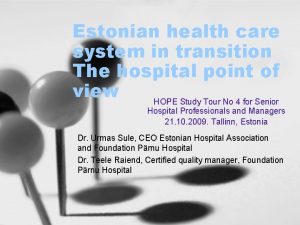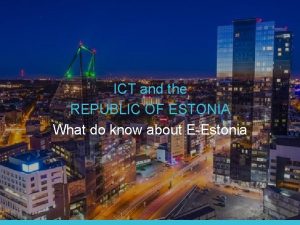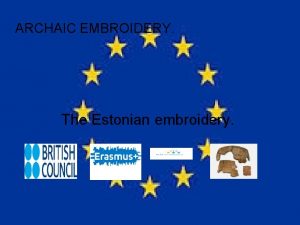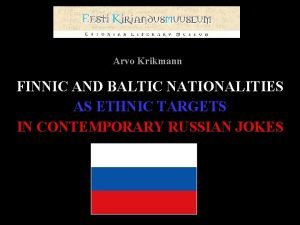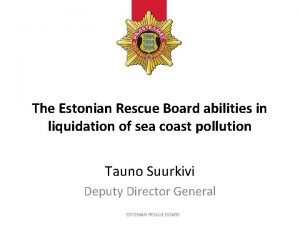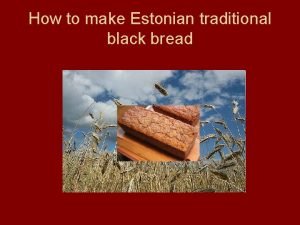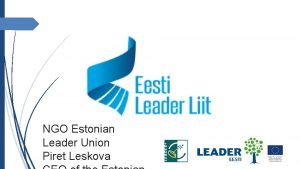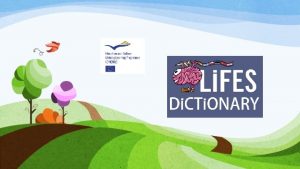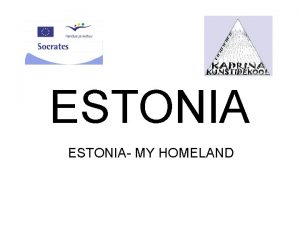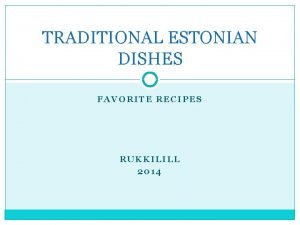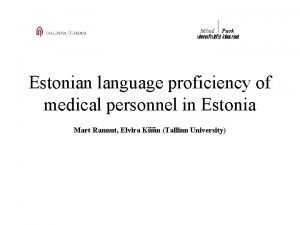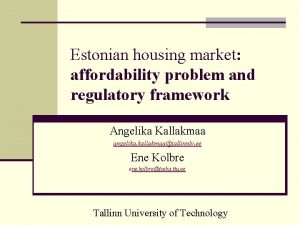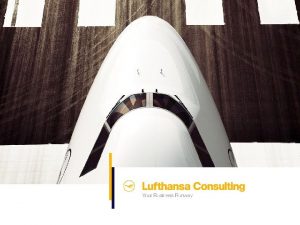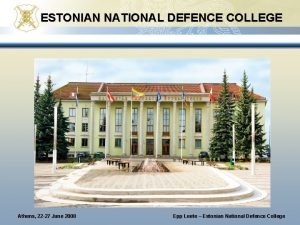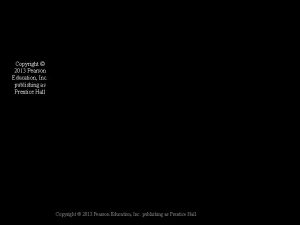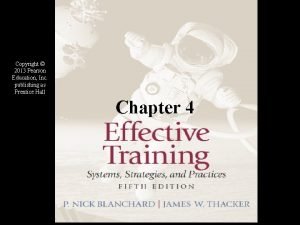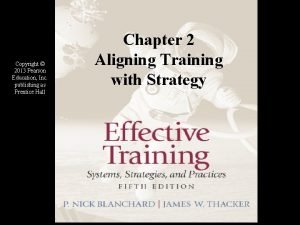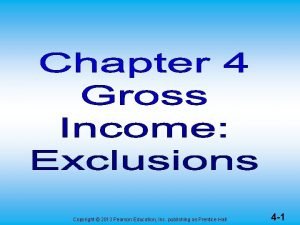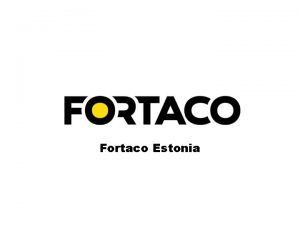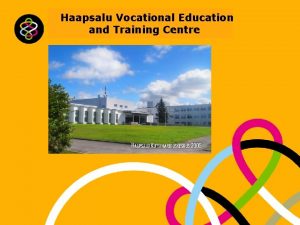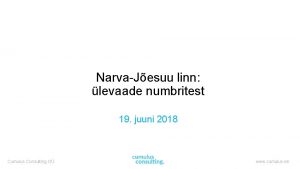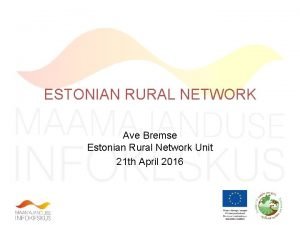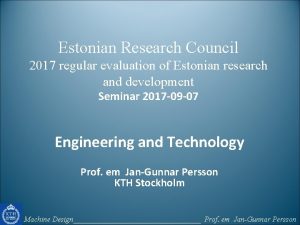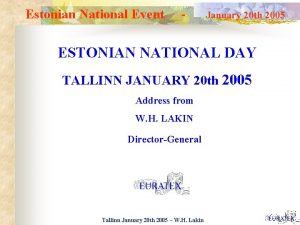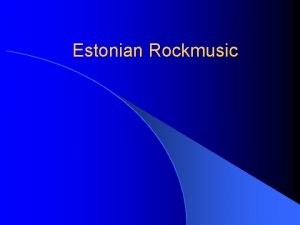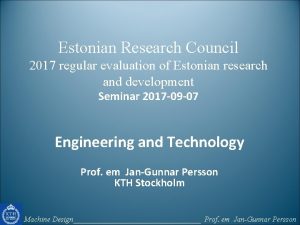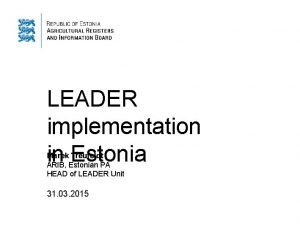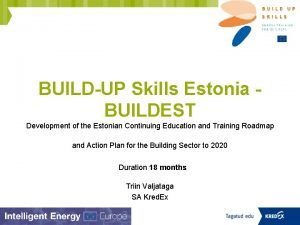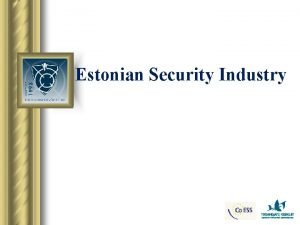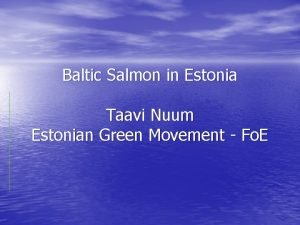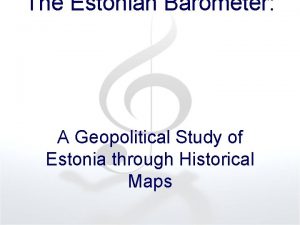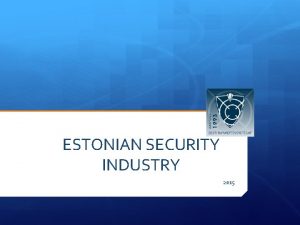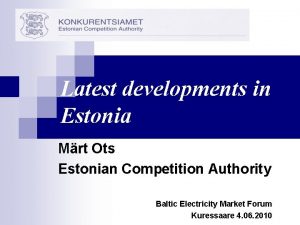EDUCATION SYSTEM IN ESTONIA NARVAJESUU 2013 The Estonian





















- Slides: 21

EDUCATION SYSTEM IN ESTONIA NARVA-JÕESUU 2013

The Estonian educational system consists of state, municipal, public and private educational institutions. There are currently 589 schools in Estonia. Today's education in Estonia is divided into General education Vocational education Hobby education.

The education system is based on four levels which include the: �pre-school �basic education �general/secondary/ �higher education vocational education

Kindergarten Age level from 1 to 6 (game activities) Basic knowledge of Communication Counting Drawing and painting Using modelling clay First attempts of reading and writing

PRESCHOOL preparatory course ( EU), elementary education ( USA)

Pre- School Length of program in years: 1 Age level from: 6 to: 7 Estonian pre- school education is provided in schools, where the child will stay in steadily advancing classes until they complete it and move on to secondary school. Pre-School prepares children for the feature of the basic education system.

BASIC EDUCATION Grades 1 -9 (Basic school)

Basic education Grades 1 -9 (Basic school) Length of program in years: 9 � Age level from: 7 to: 16 � At the end of basic educational there are free final examinations: � Mother tongue ( Russian /Estonian) � Mathematics � Can be chosen ( biology, chemistry, physics, geography, history or foreign language) � After satisfactory completion of the study programme and passing the basic school final examinations, the students obtain the Basic School Leaving Certificate.

Basic School Leaving Certificate Basic School Leaving Report Card

SECONDARY/ GENERAL EDUCATION Grades 10 -12 (Gymnasium)

Secondary / general education ( on the base of the Basic School Leaving Certificate) � � � � Length of program in years: 3 Age level from: 16 to: 19 Some gymnasiums provide general education, others have a specific focus. The four traditional branches are: humanities education (specialising in Classical languages, such as English, German and France) mathematical-scientific education economical and social-scientific education (students are required to study economics, social studies and business informatics) gymnasium for adults ( full-time study, part-time study, extern)

EXAMINATIONS At the end of secondary educational there are five graduation final examinations: Mother tongue ( Russian /Estonian) Four exams can be chosen ( biology, chemistry, physics, geography, history or foreign language). After passing the secondary school final graduation examinations, the students obtain the Secondary School Leaving Certificate which gives access to higher education.

Secondary School Leaving Certificate Secondary School Leaving Report Card

Vocational Education Institution

Vocational Education Institution (Basic school based) � Length of program in years: 3 � Age level from: 16 to: 19 � Prepares the students for entering the workforce. � The basic categories of education are: � IT worker � Electrician � Process worker � Forest worker � Catering worker � Students obtain a Certificate on Acquiring Secondary Vocational Education Based on Basic Education

Vocational Education Institution (post-secondary) Age level from: 19 to: 22 Students who have completed the postsecondary vocational programme for secondary vocational education on the basis of secondary school education will, upon graduation, obtain a Certificate on Acquiring Secondary Vocational Education Based on Secondary Education.

45 vocational educational institutions in Estonia : 31 - state, 3 - municipal 11 - private vocational schools.

Higher educational (University )

Higher educational (University ) ( Secondary school/ Secondary Vocational education based) � Academic higher education in Estonia is divided into three levels: � Bakalaureus � (duration of studies is 3 to 4 years. ) � Master � studies level (duration of studies is 2 years. ) � Doctoral � � level studies level (duration of studies is 3 to 4 years. )

The largest public universities in Estonia are: Tartu University - www. ut. ee Tallinn University of Technology -www. ttu. ee Tallinn University - www. tlu. ee Estonian University of Life Sciences - www. emu. ee Estonian Academy of Arts - www. artun. ee Estonian Academy of music and theatre - www. ema. edu. ee The largest private universities are: Estonian Business School - www. ebs. ee Mainori Business School - www. mk. ee Institute of Humanities and Social Sciences - www. shi. ee

Thank you for your attention!!!
 Estonian healthcare system
Estonian healthcare system Estonian ict cluster
Estonian ict cluster Ornamendid
Ornamendid Pitaras russian
Pitaras russian Tauno suurkivi
Tauno suurkivi Estonian black bread recipe
Estonian black bread recipe Estonian peat cake
Estonian peat cake Estonian real estate market
Estonian real estate market Estonian
Estonian Bononote
Bononote Estonian national bird
Estonian national bird Traditional estonian kitchen
Traditional estonian kitchen English speaking family doctor tallinn
English speaking family doctor tallinn Estonian real estate market
Estonian real estate market Estonian aviation academy
Estonian aviation academy Estonian national defence college
Estonian national defence college 2013 pearson education inc
2013 pearson education inc 2013 pearson education inc
2013 pearson education inc 2013 pearson education inc
2013 pearson education inc 2013 pearson education inc
2013 pearson education inc 2013 pearson education inc
2013 pearson education inc 2013 pearson education inc
2013 pearson education inc
